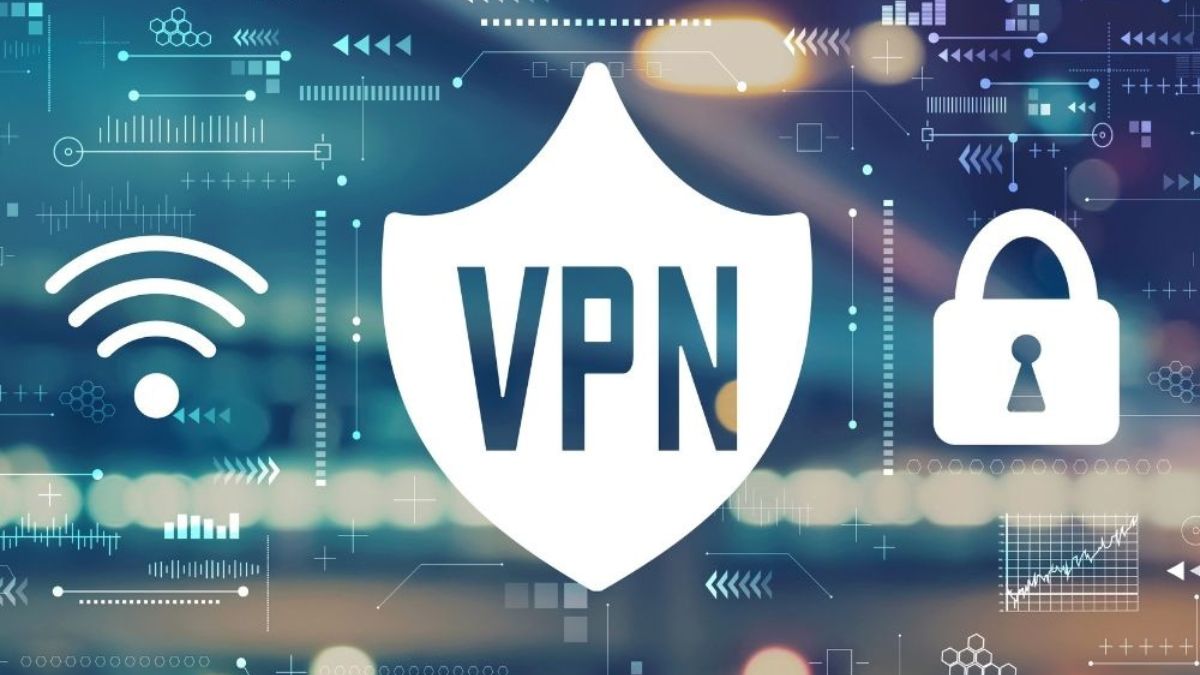TECH
How to Optimize Tele-marketing Campaigns for Maximum Impact: Tips from Blacksire

In today’s highly competitive business environment, tele-marketing remains a crucial channel for reaching target audiences and driving sales. The effectiveness of tele-marketing campaigns can significantly impact a company’s revenue, yet many organizations struggle with low conversion rates, inconsistent messaging, and inefficient processes. Addressing these challenges requires a strategic approach that leverages advanced techniques and data-driven insights.
One solution that has emerged as a leader in this arena is Blacksire Tele-marketing. Known for its innovative methodologies and robust support tools, Blacksire Tele-marketing offers a comprehensive suite of solutions designed to optimize campaign performance and drive maximum impact. This article outlines actionable strategies to refine tele-marketing efforts, detailing the best practices that enable organizations to achieve higher conversion rates and improved overall campaign efficiency.
Understanding Tele-marketing Campaigns
What is Tele-marketing?
Tele-marketing involves contacting prospective and existing customers via telephone to promote products or services, generate leads, and close sales. This form of direct marketing is particularly effective for establishing personal connections and building trust. Through carefully crafted scripts and targeted outreach, tele-marketing can be a powerful tool for engaging customers and driving immediate results.
Key Elements of a Successful Campaign
Successful tele-marketing campaigns hinge on several key elements: a compelling script, precise audience segmentation, efficient tracking of performance metrics, and ongoing feedback. Clear and persuasive scripts guide conversations toward conversion while ensuring that the message remains consistent. Targeted audience segmentation allows support teams to tailor their approach based on customer profiles, ensuring that communications are relevant and engaging.
Data-driven insights further enhance campaign effectiveness. Organizations can continuously refine their strategies, adjust targeting parameters, and improve overall performance by analyzing call data, conversion rates, and customer feedback. This iterative process is essential for achieving maximum impact in tele-marketing.
Key Strategies for Optimizing Tele-marketing Campaigns
Crafting Effective Tele-marketing Scripts
The foundation of any successful tele-marketing campaign lies in its script. A well-crafted script must be clear, engaging, and adaptable to different customer scenarios. It should address common customer pain points, highlight the unique value proposition of the product or service, and include strong calls to action that prompt immediate responses.
Scripts should be periodically reviewed and updated based on performance data and customer feedback. This continuous refinement process ensures that the messaging remains relevant and effective, ultimately leading to higher conversion rates.
Targeted Audience Segmentation
Effective audience segmentation is essential for maximizing the impact of tele-marketing efforts. Organizations must identify and categorize potential customers based on demographics, purchasing behavior, and other relevant factors. By tailoring messages to specific audience segments, telemarketers can address unique needs and preferences, increasing the likelihood of conversion.
Segmenting the audience allows for more personalized interactions, which contribute to improved customer engagement and satisfaction. With targeted outreach, support teams can focus on high-potential leads, enhancing overall campaign efficiency.
Leveraging Data-Driven Insights
Data-driven insights play a critical role in optimizing tele-marketing campaigns. Analyzing real-time call metrics, conversion rates, and customer feedback clearly shows what is working and what requires improvement. By integrating advanced analytics into their tele-marketing strategies, organizations can make informed adjustments that drive better results.
The integration of sophisticated analytics tools enables teams to monitor performance continuously and adjust their tactics in real-time. This proactive approach ensures that campaigns remain agile and responsive to market changes, leading to sustained improvements in efficiency and effectiveness.
Implementing A/B Testing
A/B testing is a powerful method for refining tele-marketing strategies. By comparing different versions of tele-marketing scripts and campaign approaches, organizations can identify which elements resonate best with their target audience. A/B testing provides concrete data on the effectiveness of various messaging techniques, enabling support teams to adopt the most successful strategies.
Regular A/B testing ensures the campaign evolves with customer preferences and market trends. Continuous experimentation and optimization lead to enhanced performance and improved ROI over time.
Enhancing Agent Training and Performance
The agents’ skills and expertise heavily influence a tele-marketing campaign’s effectiveness. Comprehensive training programs equip telemarketers with the knowledge and tools to handle diverse customer interactions. Continuous training, performance feedback, and skill development initiatives ensure that support teams remain at the forefront of industry best practices.
Well-trained agents can better engage customers, resolve issues promptly, and drive conversions. Investing in regular training and development enhances the overall performance of tele-marketing campaigns and contributes to long-term success.
Leveraging Blacksire Tele-marketing
Overview of Blacksire Tele-marketing
Blacksire Tele-marketing is a state-of-the-art solution designed to optimize tele-marketing campaigns through advanced techniques and comprehensive support tools. The service integrates real-time analytics, automated lead management, and CRM integration to streamline tele-marketing. It offers a tailored approach that aligns with an organization’s needs, ensuring that campaigns are efficient, cost-effective, and high-performing.
Core Features and Capabilities
Blacksire Tele-marketing provides several key features that enhance campaign effectiveness:
- Real-Time Analytics: Continuous tracking of performance metrics, enabling immediate adjustments.
- Automated Lead Management: Streamlines the process of identifying and nurturing high-potential leads.
- CRM Integration: Ensures a unified view of customer data, facilitating personalized interactions.
- Customized Scripting: Offers tailored scripts that are regularly updated based on feedback and performance data.
- Comprehensive Reporting: Detailed reports highlighting key performance indicators and areas for improvement.
Business Benefits and ROI
Organizations that implement Blacksire Tele-marketing experience measurable improvements in conversion rates, reduced costs, and increased customer engagement. The strategic use of advanced analytics and automation leads to more efficient campaigns and higher returns on investment. Businesses that leverage these tools gain a competitive advantage by quickly adapting to market changes and continuously optimizing their tele-marketing strategies.
Implementation Best Practices
Assessing the Current Tele-marketing Processes
Before adopting advanced tele-marketing strategies, organizations should thoroughly assess their current processes. This evaluation should identify existing inefficiencies, gaps in performance, and areas where targeted improvements can yield significant benefits. Baseline metrics established during this assessment are a reference point for measuring future improvements.
Developing a Tailored Tele-marketing Plan
Based on the assessment, organizations must develop a comprehensive tele-marketing plan aligning with their strategic objectives. This plan should outline clear goals, define key performance indicators, and specify the tactics to be employed. A tailored plan ensures that tele-marketing efforts are focused, measurable, and aligned with overall business goals.
Training and Empowering Tele-marketing Teams
Ongoing training and performance improvement are critical for sustaining high-quality tele-marketing efforts. Continuous education programs, role-playing exercises, and regular performance reviews help ensure that agents remain proficient in the latest techniques and best practices. Empowered tele-marketing teams can adapt to customer needs and drive conversion rates upward.
Continuous Improvement Through Feedback Loops
Establishing continuous feedback loops is essential for ongoing optimization. Organizations should implement mechanisms to collect customer feedback, analyze performance data, and refine tele-marketing strategies accordingly. Regular monitoring and iterative improvements ensure that campaigns evolve in line with changing market dynamics and customer expectations.
Case Studies and Success Stories
Real-World Examples of Optimized Tele-marketing Campaigns
Several organizations have successfully transformed their tele-marketing campaigns by implementing advanced strategies. Case studies reveal that companies utilizing Blacksire Tele-marketing have significantly improved customer engagement and conversion rates. For instance, a leading service provider saw a dramatic reduction in call abandonment rates and a substantial increase in lead conversion after optimizing their tele-marketing strategies using the Blacksire solution.
Measurable Outcomes and ROI
Key performance metrics such as increased conversion rates, reduced operational costs, and higher customer satisfaction scores highlight the tangible benefits of these strategies. Organizations report that integrating advanced analytics and automated lead management provided by Blacksire Tele-marketing leads to a higher return on investment. The data-driven approach ensures that every campaign delivers measurable results, validating the strategic importance of these practices.
Lessons Learned from Industry Leaders
Insights from successful implementations emphasize the need for a holistic approach to tele-marketing. Industry leaders have demonstrated that combining targeted messaging, real-time analytics, and continuous improvement practices drives substantial business growth. The experiences of these organizations serve as a roadmap for others seeking to optimize their tele-marketing efforts and achieve superior performance.
Future Trends in Tele-marketing
Emerging Technologies and Their Impact
The future of tele-marketing is closely linked to advancements in technology. Innovations such as artificial intelligence, machine learning, and enhanced automation tools are set to revolutionize how tele-marketing campaigns are managed. These technologies will enable even more precise targeting, faster response times, and improved customer personalization, driving higher engagement and conversion levels.
The Evolving Role of Customer Engagement
As consumer behaviors evolve, tele-marketing strategies must adapt to meet changing expectations. The shift towards personalized, data-driven interactions is expected to grow, with organizations increasingly relying on advanced analytics to shape their outreach efforts. Future trends indicate that integrating multi-channel strategies with sophisticated tele-marketing solutions will become standard practice for achieving optimal customer engagement.
Future Enhancements for Blacksire Tele-marketing
Blacksire Tele-marketing is continuously evolving to incorporate the latest technological advancements. Future enhancements may include more advanced predictive analytics, deeper integration with CRM systems, and even more refined automation capabilities. These developments will further improve the efficiency and effectiveness of tele-marketing campaigns, ensuring that organizations remain competitive in a dynamic market.
Elevate Your Tele-marketing Impact Today
Optimizing tele-marketing campaigns is crucial for driving revenue growth and maintaining a competitive edge in today’s fast-paced market. By leveraging data-driven strategies, targeted messaging, continuous feedback, and advanced automation, organizations can transform their tele-marketing efforts into powerful revenue drivers. The innovative tools and methodologies offered by Blacksire Tele-marketing empower businesses to achieve higher conversion rates, lower operational costs, and improved customer engagement.
The measurable outcomes from these strategies demonstrate a clear return on investment and validate the strategic value of an optimized tele-marketing approach. Organizations that adopt these advanced practices are well-positioned to navigate evolving market conditions and outperform competitors.
For further details on enhancing tele-marketing performance with cutting-edge strategies, contact inquiries@blacksire.com.
TECH
Do You Need a VPN? Pros, Cons, and How They Work

A Virtual Private Network (VPN) is often talked about as a must-have for online security and privacy. But do you actually need one? Some people use VPNs to hide their browsing activity, while others rely on them to access content that’s blocked in their country. Businesses use them to secure remote work connections, and some just want to stop their internet provider from tracking them.
If you’re wondering whether a VPN is right for you, this guide breaks down how they work, when they’re useful, and what to consider before using one.
 How a VPN Works
How a VPN Works
A VPN acts like a middleman between your device and the internet. Instead of connecting directly to a website or an app, your data first passes through a secure server, which hides your real location and encrypts your internet traffic. This makes it much harder for anyone—whether it’s your internet service provider (ISP), hackers, or even advertisers—to see what you’re doing online.
When you connect to a VPN, your device forms a secure tunnel to a server, usually in another part of the world. All the data you send and receive is scrambled so that even if someone intercepts it, they wouldn’t be able to read it. The website or service you’re accessing will only see the VPN’s location, not yours. This is why many people use VPNs to bypass content restrictions.
Encryption and Security
Encryption is what keeps your data private when using a VPN. Most providers use AES-256 encryption, which is nearly impossible to crack. But encryption alone isn’t enough—VPNs also rely on different protocols to manage how your data moves through the network. Some are built for security, while others focus on speed.
Common VPN protocols include:
- OpenVPN – Reliable and secure, works on most devices.
- IKEv2/IPsec – Good for mobile devices because it handles network changes well.
- WireGuard – A newer option that balances speed and security.
- L2TP/IPsec – Decent security but slower than others.
- PPTP – One of the oldest protocols, but it’s no longer considered safe.
Reasons People Use VPNs
VPNs aren’t just for privacy. They solve different problems depending on how you use the internet.
1. Keeping Data Private
When you connect to a public Wi-Fi network at a coffee shop or an airport, your data is exposed. Hackers can intercept it, and some Wi-Fi providers even collect browsing data to sell to advertisers. A VPN blocks this by encrypting your connection, making it unreadable to anyone trying to snoop.
2. Hiding Online Activity
ISPs can track every website you visit. They often use this information to create targeted ads or even slow down certain types of traffic, like streaming or gaming. A VPN stops them from doing this by masking your browsing history.
Online advertisers also track users through cookies and other data-collection methods. While a VPN won’t block all of these, it makes it harder for companies to create detailed profiles of your online habits.
3. Accessing Blocked Content
Streaming services and websites restrict access based on location. If you’ve ever tried to watch a show that’s only available in another country, you’ve seen this firsthand. A VPN lets you change your virtual location, tricking the service into thinking you’re somewhere else.
This also helps people in countries where the government censors certain websites. By connecting through a VPN server in a different country, they can bypass restrictions and use the internet freely.
4. Avoiding ISP Throttling
Some internet providers intentionally slow down certain activities, like streaming, gaming, or file-sharing. Because a VPN hides what you’re doing, your ISP can’t selectively reduce your speed based on your activity.
5. Secure Remote Work
For businesses, VPNs are a standard security tool. They allow employees to connect to company networks from anywhere without exposing sensitive data. However, many organizations deal with VPN connection issues, which can be caused by slow networks, incorrect settings, or firewalls blocking the connection. Resolving these problems is essential to maintaining secure remote access.
Things to Consider Before Using a VPN
While VPNs are useful, they’re not perfect. There are some downsides and situations where a VPN might not be necessary.
1. Slower Internet Speeds
Because a VPN routes your data through an extra server, it can slow down your connection. The impact depends on factors like the distance to the server, the encryption level, and how crowded the VPN’s network is. Some providers are faster than others, but there’s usually some drop in speed.
2. Not Every Service Works With a VPN
Streaming platforms and banks often block VPNs. Services like Netflix and Hulu actively detect and restrict VPN traffic to enforce licensing agreements. Some banks may also flag logins from VPNs as suspicious and block access.
3. Free VPNs Can Be Risky
A lot of free VPNs make money by tracking and selling user data, which defeats the purpose of using one in the first place. Others have weak security or even contain malware. If you want privacy, it’s better to use a reputable paid service.
4. VPNs Are Illegal in Some Countries
VPNs are banned or restricted in places like China, Russia, and the UAE. Using one in these countries can lead to fines or other legal trouble. If you travel frequently, check the laws before relying on a VPN.
Types of VPNs
Not all VPNs work the same way. There are different types, each designed for specific needs.
1. Remote Access VPNs
This is the type most people use. It lets individuals connect to a private network from anywhere. It’s useful for both personal security and remote work.
2. Site-to-Site VPNs
Businesses use these to connect multiple office locations over the internet. Instead of employees using their own VPNs, the company network itself is linked securely.
3. Cloud-Based VPNs
Cloud-based VPNs work similarly to traditional VPNs but are hosted in the cloud. They are often used alongside cloud-based MDM platforms, which allow IT teams to manage and secure company devices remotely. By combining a VPN with an MDM system, businesses can enforce security policies while ensuring employees have secure internet access.
How to Choose the Right VPN
Picking a VPN depends on what you need. Some are better for privacy, while others focus on speed or streaming access. Here’s what to look for:
- Strong security – Encryption, a no-logs policy, and leak protection.
- Good server locations – The more, the better for accessing blocked content.
- Fast speeds – Some providers have better performance than others.
- Device support – Check if it works on your operating system and router.
- User-friendly apps – A complicated VPN can be frustrating to use.
Should You Use a VPN?
It depends on your online habits. If privacy, security, and unrestricted access matter to you, a VPN is a good tool to have. But it’s not a magic solution. For businesses, they’re essential for protecting remote workers, though managing them properly is key. Organizations that require employees to connect through a VPN should also have a plan in place for dealing with VPN connection issues to avoid disruptions.
Conclusion
A VPN can be a solid choice if privacy, security, or unrestricted access to content is a priority for you. It keeps your data encrypted, hides your online activity, and helps bypass restrictions. But it’s not always necessary, and it’s not without its drawbacks. Slower speeds, blocked services, and the risks of using free VPNs are all things to consider. For businesses, VPNs are critical for secure remote work, but VPN connection issues can be a hassle if not properly managed. Whether or not you need one depends on what you do online, but if you decide to use a VPN, picking a reliable service is what matters most.
TECH
Bold2FA: The Future of Digital Authentication

In an increasingly digital world, where our personal and professional lives are intertwined with online platforms, the need for robust security measures has never been greater. Passwords alone are no longer sufficient to protect sensitive information from cyber threats. Enter Bold2FA, a revolutionary approach to digital authentication that promises to redefine how we secure our online accounts and data. In this article, we will explore what Bold2FA is, how it works, its benefits, and why it is poised to become the future of digital authentication.
What is Bold2FA?
Bold2FA, or Bold Two-Factor Authentication, is an advanced security protocol that enhances traditional two-factor authentication (2FA) methods by incorporating cutting-edge technologies such as biometrics, behavioral analytics, and decentralized identity systems. Unlike conventional 2FA, which typically relies on a combination of passwords and one-time codes sent via SMS or email, Bold2FA leverages multiple layers of verification to provide a more secure and user-friendly authentication experience.
The name “Bold” reflects the platform’s commitment to bold innovation in the field of digital security, offering a solution that is not only highly secure but also adaptable to the evolving needs of users and organizations.
How Does Bold2FA Work?
Bold2FA operates on a multi-layered authentication framework that combines several verification methods to ensure maximum security. Here’s a breakdown of how it works:
- Primary Authentication (Something You Know)
The first layer of Bold2FA involves traditional authentication methods, such as a password or PIN. While this step is familiar to most users, Bold2FA enhances it by integrating pass wordless options, such as security questions or pattern-based authentication. - Secondary Authentication (Something You Have)
The second layer introduces a physical element, such as a smartphone, hardware token, or smart card. Bold2FA goes beyond traditional 2FA by supporting advanced options like QR code scanning, NFC-based authentication, and Bluetooth-enabled devices. - Tertiary Authentication (Something You Are)
The third layer incorporates biometric verification, such as fingerprint scanning, facial recognition, or voice authentication. Bold2FA uses state-of-the-art biometric technologies to ensure accuracy and prevent spoofing. - Behavioral Analytics (Something You Do)
Bold2FA takes authentication a step further by analyzing user behavior, such as typing patterns, mouse movements, and device usage. This layer adds an additional level of security by detecting anomalies that may indicate unauthorized access. - Decentralized Identity Verification
Bold2FA integrates decentralized identity systems, such as blockchain-based authentication, to eliminate the need for centralized databases that are vulnerable to hacking. This approach ensures that user data remains secure and private.
Benefits of Bold2FA
Bold2FA offers a wide range of benefits that make it a superior alternative to traditional authentication methods. Here are some of the key advantages:
1. Enhanced Security
By combining multiple layers of verification, Bold2FA significantly reduces the risk of unauthorized access. Even if one layer is compromised, the additional layers provide robust protection against cyber threats.
2. User-Friendly Experience
Bold2FA is designed with user convenience in mind. Features like biometric authentication and pass wordless options streamline the login process, making it faster and more intuitive.
3. Adaptability
Bold2FA is highly adaptable and can be customized to meet the specific needs of different industries and use cases. Whether you’re securing a banking app, a corporate network, or a healthcare platform, Bold2FA can be tailored to fit your requirements.
4. Fraud Prevention
The integration of behavioral analytics and decentralized identity systems makes Bold2FA highly effective at detecting and preventing fraudulent activities. This is particularly important for industries like finance and e-commerce, where fraud is a major concern.
5. Compliance with Regulations
Bold2FA helps organizations comply with data protection regulations, such as GDPR and CCPA, by ensuring that user data is securely stored and processed. This reduces the risk of legal penalties and reputational damage.
6. Future-Proof Technology
As cyber threats continue to evolve, Bold2FA is designed to stay ahead of the curve. Its modular architecture allows for the integration of new technologies and security measures as they emerge.
Applications of Bold2FA
Bold2FA has a wide range of applications across various industries. Here are some examples of how it can be used:
1. Banking and Finance
In the banking sector, Bold2FA can be used to secure online banking platforms, mobile apps, and ATM transactions. Its multi-layered authentication ensures that sensitive financial data remains protected.
2. Healthcare
Bold2FA can enhance the security of electronic health records (EHRs) and telemedicine platforms, ensuring that patient data is accessible only to authorized personnel.
3. E-Commerce
For e-commerce platforms, Bold2FA can protect user accounts, payment information, and transaction data, reducing the risk of fraud and enhancing customer trust.
4. Corporate Networks
Bold2FA can be used to secure corporate networks, remote access systems, and cloud-based applications, ensuring that only authorized employees can access sensitive company data.
5. Government Services
Government agencies can use Bold2FA to secure online services, such as tax filing, social security, and voter registration, protecting citizens’ personal information from cyber threats.
The Future of Digital Authentication with Bold2FA
As digital transformation accelerates, the need for secure and user-friendly authentication solutions will only grow. Bold2FA is poised to lead the way in this evolution, offering a comprehensive and future-proof approach to digital security. Here are some trends that Bold2FA is likely to influence in the coming years:
1. Pass wordless Authentication
Bold2FA’s support for pass wordless options aligns with the growing trend toward eliminating passwords altogether. This shift will make authentication more convenient and secure for users.
2. Biometric Advancements
As biometric technologies continue to improve, Bold2FA will integrate more advanced features, such as vein pattern recognition and gait analysis, further enhancing security.
3. Decentralized Identity Systems
The adoption of decentralized identity systems, such as blockchain-based authentication, will become more widespread, and Bold2FA will play a key role in this transition.
4. AI-Driven Security
Bold2FA will leverage artificial intelligence to enhance behavioral analytics, enabling real-time detection of suspicious activities and proactive threat prevention.
5. Cross-Industry Adoption
As awareness of Bold2FA’s benefits grows, its adoption will expand across industries, from education and entertainment to transportation and logistics.
Challenges and Considerations
While Bold2FA offers numerous advantages, its implementation is not without challenges. Organizations must consider factors such as cost, user adoption, and integration with existing systems. Additionally, the use of biometric data raises privacy concerns that must be addressed through transparent policies and robust data protection measures.
Conclusion
Bold2FA represents the future of digital authentication, offering a secure, user-friendly, and adaptable solution for protecting online accounts and data. By combining multiple layers of verification, advanced technologies, and decentralized identity systems, Bold2FA addresses the limitations of traditional authentication methods and sets a new standard for digital security. As cyber threats continue to evolve, Bold2FA provides a forward-looking approach that ensures users and organizations can navigate the digital landscape with confidence. Whether you’re a business leader, a cybersecurity professional, or an everyday user, Bold2FA is a game-changer that promises to redefine how we think about online security.
TECH
FX XVR216: A Comprehensive Overview of Its Features and Benefits

The security landscape is evolving rapidly, and businesses are seeking cutting-edge solutions to protect their assets and data. The FX XVR216 is one such versatile device, designed to streamline video surveillance while delivering superior performance. But what makes it stand out? This guide explores the FX XVR216’s features, its benefits, and why it’s an ideal choice for businesses and organizations looking to enhance their security infrastructure.
Whether you’re an enterprise or small business owner, get ready to understand what the FX XVR216 truly brings to the table.
What Is the FX XVR216?
The FX XVR216 is a hybrid video recorder designed to provide seamless compatibility between analog and IP cameras. This makes it a future-proof solution, as businesses can maintain existing analog systems while transitioning to IP-based security networks. Combining cutting-edge technology with ease of use, it has quickly become a popular choice among professionals in the security sector.
But why does this distinction matter? Analog systems are often cost-effective, while IP-based systems deliver superior image quality and additional features. The FX XVR216 blends the best of both worlds, ensuring that businesses do not have to compromise when upgrading their surveillance equipment.
Key Features of the FX XVR216
1. Hybrid Functionality
The FX XVR216 works seamlessly with both analog and IP cameras. It supports up to 16 channels, giving users the flexibility to monitor multiple areas without investing in separate devices for different camera types. This hybrid capability is particularly attractive for businesses with existing analog systems who want to gradually incorporate advanced IP cameras.
2. 4K Ultra HD Resolution Support
Clarity is crucial when it comes to security footage. The FX XVR216 supports 4K Ultra HD output for crystal-clear recordings, ensuring that no detail goes unnoticed. This feature is particularly useful for organizations requiring highly detailed footage for forensic purposes, such as retail businesses, banks, and government facilities.
3. H.265+ Video Compression
Efficient storage without compromising video quality is essential. The FX XVR216 utilizes H.265+ video compression technology, which reduces file sizes significantly compared to standard H.264 compression. This allows organizations to store more footage without increasing storage costs, all while maintaining high-quality recordings.
4. AI-Powered Smart Features
One of the standout elements of the FX XVR216 is its AI-powered analytics. It includes features like facial recognition, object detection, and perimeter protection, making it easier to identify potential security threats in real time. These proactive capabilities add an extra layer of reliability and protection.
5. Remote Access and Mobile Integration
The FX XVR216 offers intuitive remote access through its dedicated mobile app and web client. This means users can monitor live footage or review recordings from anywhere in the world. With push notifications for motion detection or predefined alerts, security teams stay informed, no matter where they are.
6. User-Friendly Interface
Adopting sophisticated technology can be daunting, but the FX XVR216 ensures a smooth transition with its simple and user-friendly interface. The clean design and easy navigation minimize the learning curve, allowing security personnel to operate it efficiently with minimal training.
Benefits of Using the FX XVR216
Future-Proof Scalability
By supporting both analog and IP cameras, the FX XVR216 allows businesses to migrate to advanced solutions at their own pace. There’s no urgent need to replace all analog systems upfront, leading to significant cost savings.
Enhanced Security
With 4K resolution and intelligent AI analytics, the FX XVR216 helps businesses maintain a robust security framework. Facial recognition, for example, ensures that only authorized personnel gain access to certain areas, while perimeter detection deters intrusions before they escalate.
Cost-Effective Operation
The H.265+ video compression reduces the need for excessive storage capacity. Plus, hybrid functionality lowers hardware investment costs by consolidating analog and IP camera systems. These features make it a cost-efficient choice for businesses of all sizes.
Flexibility and Mobility
Remote monitoring ensures that security isn’t confined to one location. Whether you’re offsite or managing multiple locations, the FX XVR216 ensures that surveillance footage is always accessible via the app or web client.
Increased Productivity Through Automation
Thanks to its AI-powered features, the FX XVR216 automatically identifies and alerts users of potential issues. This reduces the need for constant manual surveillance and allows security teams to focus on priority tasks.
Use Cases for the FX XVR216
Retail Businesses
Retail stores can use the FX XVR216 to monitor customer behavior, deter shoplifting, and secure inventory. With AI-powered analytics, such as people counting or heat mapping, businesses can also gain insights into customer traffic to improve sales strategies.
Warehouses and Logistics Centers
Keeping warehouses and logistics hubs safe is critical. The FX XVR216’s ensures that all entry points, loading docks, and storage areas are monitored, with AI features detecting unauthorized accesses even in busy environments.
Office Buildings
For office environments, the FX XVR216’s can ensure access control through facial recognition while keeping parking lots, lobbies, and workspaces secure with its high-definition resolution and motion detection alerts.
Educational Institutions
Schools and universities can use the FX XVR216’s to enhance campus safety. By monitoring hallways, entries, and outdoor spaces, the device helps staff respond quickly to emergencies and maintain student safety.
Is the FX XVR216 Right For Your Needs?
The FX XVR216’s is suitable for any organization looking to improve security, reduce operational costs, and incorporate advanced technology into their surveillance systems. Its hybrid functionality, AI-driven analytics, and support for 4K resolution enable businesses to create a future-proof system without a hefty initial investment.
When evaluating a video recorder for your security needs, consider factors such as the size of your operation, the type of cameras currently in use, and required features like remote monitoring or AI analytics.
Final Thoughts
The FX XVR216 stands out as a versatile, cost-effective, and future-ready device for businesses seeking to stay ahead in security technology. With its hybrid compatibility, AI-powered features, and user-friendly interface, it’s a smart investment that can grow alongside your organization.
If you’re ready to elevate your security infrastructure, begin your FX XVR216’s experience today. Contact us to learn more or schedule a personalized demo suited to your specific business needs.
-

 BLOG1 month ago
BLOG1 month agoIZoneMedia360 .Com: Exploring the Features and Benefits
-

 BLOG4 months ago
BLOG4 months agoAbout Blog TurboGeekOrg: A Go-To Hub for Tech Enthusiasts and Latest Innovations
-

 BLOG5 months ago
BLOG5 months agoWhat is a Golden Transit in Magi Astrology?
-

 BLOG1 month ago
BLOG1 month agoA Complete Guide to ProcurementNation.com Shipping
-

 ENTERTAINMENT5 months ago
ENTERTAINMENT5 months agoTyquaez Pickett: A Rising Star in the Entertainment World
-

 HOME1 month ago
HOME1 month ago5StarsStocks.com Nickel: Invest for a Bright Future
-

 BLOG3 months ago
BLOG3 months agoWho Is Hall Sinclair? The True Story of Olivia Colman’s Son
-

 NEWS4 weeks ago
NEWS4 weeks agoChloe Berger News: Insights on Employee Rights and Talent Retention
